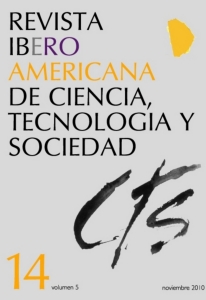Intentions and Artifices
DOI:
https://doi.org/10.52712/issn.1850-0013-840Keywords:
intention, artifact, intentional approachAbstract
This article presents and discusses the philosophical core of the so called intentional approach on artifacts. In particular, it analyses the intuition that claims that an artifact is the object that it is because it has been produced according to the intention of being precisely that object and not another one. In the first part of this article the basic claims of this position are formulated. In the second part certain objections are presented. The purpose consists of beginning to delineate the respective pros and cons of this approach.
Downloads
References
HILPINEN, R. (1993): “Authors and Artifacts”, Proceedings of the Aristotelian Society, nº 93, pp. 155-178.
HILPINEN, R. (2004): “Artifact”, en E. N. Zalta (ed.): The Stanford Encyclopedia of Philosophy - Fall 2004 Edition. Disponible en: http://plato.stanford.edu/archives/fall2004/entries/artifact
THOMASSON, A. L. (2003): “Realism and Human Kinds”, Philosophy and Phenomenological Research, nº 67, pp. 580-609.
THOMASSON, A. L. (2007): “Artifacts and Human Concepts”, en E. Margolis y S. Laurence (eds.): Creations of the Mind, Oxford, Oxford University Press, pp. 52-73.
VEGA, J. y LAWLER, D. (en prensa): “Creating Artefactual Kinds”, en M. Franssen, P. Kroes y P. Veermas (eds.): The Metaphysics of Technical Artefacts, Synthese Library, Special Volume.
Downloads
Published
How to Cite
Issue
Section
License
Copyright (c) 2025 CC Attribution 4.0

This work is licensed under a Creative Commons Attribution 4.0 International License.
All CTS's issues and academic articles are under a CC-BY license.
Since 2007, CTS has provided open and free access to all its contents, including the complete archive of its quarterly edition and the different products presented in its electronic platform. This decision is based on the belief that offering free access to published materials helps to build a greater and better exchange of knowledge.
In turn, for the quarterly edition, CTS allows institutional and thematic repositories, as well as personal web pages, to self-archive articles in their post-print or editorial version, immediately after the publication of the final version of each issue and under the condition that a link to the original source will be incorporated into the self-archive.











